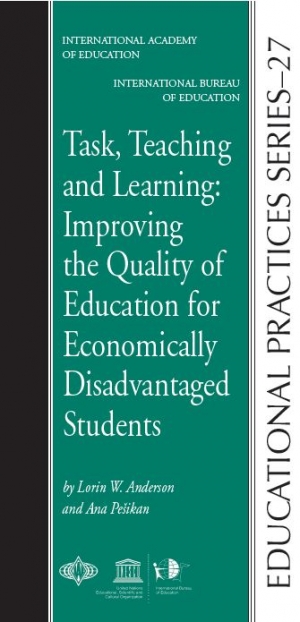Introduction
Students of all ages spend a good amount of their time in classrooms engaged in some type of academic work (e.g. worksheets, workbooks, scientific projects, essays, research papers). On average, students from elementary through high school spend approximately one half of their classroom time working by themselves (“seatwork”) or in groups (“group work”). This time estimate does not include work to be completed at home (“homework”). For college and university classrooms, this figure drops to one-third, with most in-class work done in groups.
Because most of this work is assigned by teachers, each piece of work is often referred to as an assignment. We prefer the term task because the concept of task gives purpose to the assigned work. That is, TASK = ASSIGNED WORK + PURPOSE. For students, tasks provide the answer to the often heard question, “Why am I doing this assignment?” Suppose, for example, students are given a diagram of the human muscular system and instructed to label each muscle. What is the purpose of this assignment? Is it to pass some external examination? Is it to prepare for an internship in an orthopedist’s office? Or is it for some other purpose? Although there is only one assignment, there are multiple purposes (and hence, multiple tasks).
In addition to differences in purpose, tasks differ in their settings, subject matters, scopes, forms, and complexity. Setting refers to both the physical setting (e.g., classrooms, hallways, laboratories, homes, community centers, open fields) and the social setting (e.g., individuals, small groups, competitive, cooperative). The subject matter is the content or academic discipline in which the task is embedded (e.g., language arts, science, visual arts, trades and industries, multi-disciplinary). The scope refers to the length of time needed to complete it (e.g., thirty minutes, three weeks, one semester). Form is the way it is presented to students as well as the way in which students are to respond (e.g., a worksheet with ten pairs of words and pictures to be matched, an essay to be written comparing two different forms of government). Finally, complexity refers to how complicated
the task is to understand and/or to complete. For example, procedural tasks (that is, tasks that can be completed by following a prescribed sequence of steps) are less complex than creative tasks (that is, tasks that require the person completing them to invent a way of performing or completing the task).
Every task can be analyzed in terms of these six dimensions: purpose, setting, subject matter, scope, form, and complexity. Suppose, for example, a problem set is given to students for the purpose of seeing whether they can apply scientific knowledge to solve six practical problems. Each problem in the set can be considered a separate task. Students are expected to complete the six tasks working in groups of three seated around a table (setting). Each of the six tasks requires the application of scientific knowledge (subject matter) and is presented in an open-ended form. Because they are unfamiliar problems with no ready-made solutions, the complexity is reasonably high. Finally, students are told that they will have 45 minutes to complete the assignment (scope).
Because tasks are so prevalent at all school levels, they are often forgotten as a focus area in attempts to list the characteristics of effective teachers or “best teaching practices”. In rather comprehensive lists prepared by researchers and educational practitioners, one rarely encounters the terms
“work,” “assignment,” or “task.” The purpose of this booklet, then, is to describe the central role that tasks play (or, perhaps more accurately, should play) in school learning, particularly in efforts to improve the quality of education for economically disadvantaged children and youth. In this booklet we offer a set of eight principles that, when properly applied, should enable teachers to (1) understand more fully the tasks they are using, (2) increase awareness of the reasons for using the tasks, and (3) design, select, and use tasks more effectively with economically disadvantaged children and youth.
Suggested Readings: Doyle & Carter, 1984; Hunt, 2009; MacGregor, 2007; National Survey of Student Engagement, 2013; Shernoff, Csikszentmihalyi, Schneider & Shernoff, 2003.
